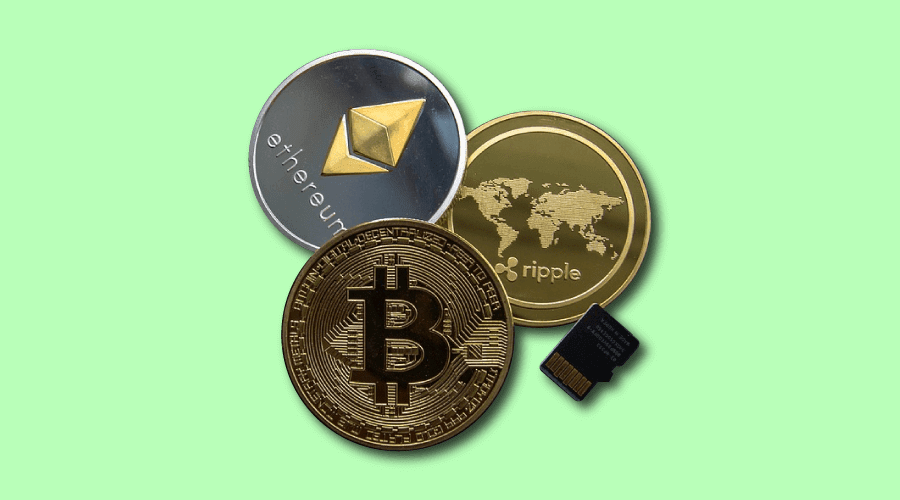Happy Tuesday! There is market excitement as both the Dow and the S&P 500 hit fresh new highs this week. Recall a year ago the Dow dropped 13% in a day. My, how far the markets have come since then. Here are the money topics for today:
🎉 Trivia. And since we talk an awful lot about money, can you guess the answer to the question below?
ECONOMYThe state of the US dollar and what that means for youIt’s all the government's fault. By March 16th, you’ve probably heard your uncle mention at least 4 times now that the dollar is going to collapse and that the price of everything will skyrocket. If you were to ask why, the answer would be a resounding and underwhelmingly researched… ”the government” or something to that effect. The reality of the situation though is that it’s much more complicated than that. Determining and forecasting the relative strength of the US Dollar and the price of the goods it can buy is a macro-economic undertaking. The long list of measurements and variables that come with that type of configuration is just not encompassed by our speculation, and so our guesses are just that. However, we can make educated predictions and approximations about where we stand. What’s on the minds of most Americans is inflation, in large part due to the previously dispersed and incoming stimulus packages, the most recent totaling north of $1.9 trillion USD. While these fears are understandable, they’re a bit unfounded and fail to consider several things. Inflation for 2020 is estimated to have ended up at about 2.2%, which is...yeah, about normal. Although there is no formalized standard for a good inflation rate, experts tend to shoot for about 2% on a yearly basis, seeing this as an indicator of a healthy, growing economy. Our most recent report from the Bureau of Labor Statistics (BLS) showed a 0.4% increase in the consumer price index (CPI) during the month of February, after clocking in a 0.3% uptick in January. This is an aggregate report, and as you'd expect, certain baskets of goods got different results. Fuel was up 9.9% on the month, while new vehicles were down 0.9%. So, is the dollar on the road to recovery then? Not yet, per se. The inflation rates don’t tell the whole story and can be a bit short-sighted at times. It’s certainly not the end of the world, but it’s not as bullish as it could be either. The Fed will likely continue their easy money policy into 2022, keeping interest rates low and new inflows of cash streaming steadily. The USDX, which compares the strength of the USD relative to 6 major foreign exchange currencies, has been down since last spring and continues to hang around $90, meaning we’re below our standardized level of $100 on purchasing power for now. And many bearish hedge funds are betting against the dollar as it’s reached its lowest point in 27 months or so, and the outlook is grim from the perspective of the pessimistic investor. However, optimists tend to see economic recovery on the horizon and expect that any supposed greenback disaster is at bay for now, and so here we are in this forex purgatory of sorts between bullish and bearish. What does this mean for you? We’ve staved off inflation a bit due to the pandemic’s economic slowdown, and it may creep in slowly or lower than expected as time goes on. We shouldn’t expect anything dramatic to happen to our purchasing power any time in the near future, as the fed seems content to keep propping up the economy as long as necessary, but beware of the potential future consequences this could have on your money, and diversify appropriately. ✋ Answer to the trivia question: After WWI when hyperinflation wreaked havoc on the German currency, Germans use paper money for wallpaper. In 1923, the exchange rate between the USD and the German Mark was a trillion Marks to one dollar. A wheelbarrow full of money couldn't buy a single newspaper. The currency had lost meaning, and many people used it as wallpaper instead. Quite a practical solution! PRESENTED BY FETCHThrowing out your receipts is like throwing out moneyDid you know there is actually value in those paper receipts you get from the store? There is a free app in town that awards you points in exchange for scans of your receipts. You can then redeem those points for free gift cards. Trust us when we say you’ll start seeing your receipts differently! Here’s what you need to do to start:
Start earning points for free gift cards. Use code FINNY during sign-up and earn 3,000 bonus points for your first receipt scanned. BUDGETINGWhat should I do with my stimulus check if I don't need it?If you’re one of many Americans finding yourself on the receiving end of the $1,400 and you don’t actually need the extra money for anything, here are some things to consider. (And no, it doesn't include buying luxury goods for your new French bulldog.) Build your emergency fund. If you don’t need the money for bills but also find yourself in a situation without a comfortable amount of living expenses saved up for a rainy day, don’t be shy about adding this to your savings. Standard convention says to save anywhere between 3 to 6 months of living expenses in your rainy-day fund, but it may be prudent to save more given the times. Start investing if you haven’t already. 2021 suddenly became the year of the retail investor, and it feels like the flood of investment apps made for the everyday investor has finally brought some warranted attention to the opportunity you now have to invest. $1,400 is more than enough to start learning and developing your investment strategy that could pay dividends in an exponential manner over time. Try the Finny Score stock and fund screener to get some ideas on where to invest. Contribute to your retirement plan to take advantage of compounding growth within these tax-advantaged accounts. As a reminder, you can contribute up to $6K into a Roth or traditional IRA ($7K if you're 50 years and older), and you can still deduct any contributions you make through April 14th for your 2020 filings. Add it to a 529 plan for a child's education. Contributions you make into this tax-advantaged account can also benefit from that compounding growth. And if you're already up-to-date on any of the above ideas, put it into a hobby that you’d love to see become profitable. Almost everyone has something they enjoy doing but has never viewed it as a potential source of income. $1,400 in extra money can go a surprisingly long way for small-time creators, making it a great use of your stimulus money. Maybe now's the time? 💡 Do you have another idea in mind for that stimmy check? Join in on the community discussion on Finny: TAXESHow do I pay taxes on my crypto gains?So your brother thinks Bitcoin is a scam, huh? Maybe he’ll think differently when you show him your tax statements for 2020? But how is cryptocurrency taxed? As you might have guessed, because if you’re reading this it’s safe to assume your IQ is very high of course, cryptocurrency profits that you’ve realized are treated just like regular capital gains on standard investments. That means, depending on how long you owned your cryptocurrency before you sold it to realize the gains in question, you may be subject to one of two US tax brackets pertaining to the capital gains tax. Capital gains tax comes in two forms, short and long-term. Long-term gains are on investments held for longer than a year, and short-term is of course those held for under that. The long-term capital gains tax rate is a whopping 0% if you made less than $40,000 in 2020. This is followed by 15% for those making between $40,000 and $440,000, and 20% for anyone making more than that. As you can see, long-term investments get preferential treatment come tax season, so if you’re a true’ hodler’ who’s finally cashing in, good for you. As for those of you with paper hands who swung your crypto for some profit in any amount of time less than a year, you’ll be hit with your ordinary income tax on those short-term gains. Depending on where you traded and stored your crypto, you’ll total up your net realized profits from the transactions you made and determine the amount you’ll be taxed on. Your exchange may do this for you, outsource you to a crypto-specific tax software, or you can calculate your cost-basis on your own. 🙋♀️ If you need a bite-sized refresher on what capital gains & losses are, take this 5-min quiz-based lesson: ✨ TRENDING ON FINNY AND BEYOND
How did you like Finny's The Gist today? (Click to vote) That’s it for today. If you’ve enjoyed today’s edition, please invite your friends to join Finny. Have a great rest of the week! The Finny Team Finny is a personal finance education start-up offering free, game-based personalized financial education, a supportive discussion forum, and simple stock and fund tools (aka Finnyvest). Our mission is to make learning about all things money fun and easy!The Gist is Finny's newsletter to our community members who are looking to make and save more money, protect their finances and be their own boss! It's sent twice a week (Tues/Thurs). The editorial team for this issue: Austin Payne and Chihee Kim.Sponsors are mission-aligned partners that offer unique and valuable services at little to no cost for our users. We only feature those partners we love using ourselves. And we're thankful for their sponsorship to enable Finny to operate! Here's our advertiser disclosure.If you have any feedback for us, please send us an email to feedback@askfinny.com.If you liked this post from Finny: The Gist, why not share it? |
💵 The stimmy check
Subscribe to:
Post Comments (Atom)
Author: Kopral Muda











No comments:
Post a Comment